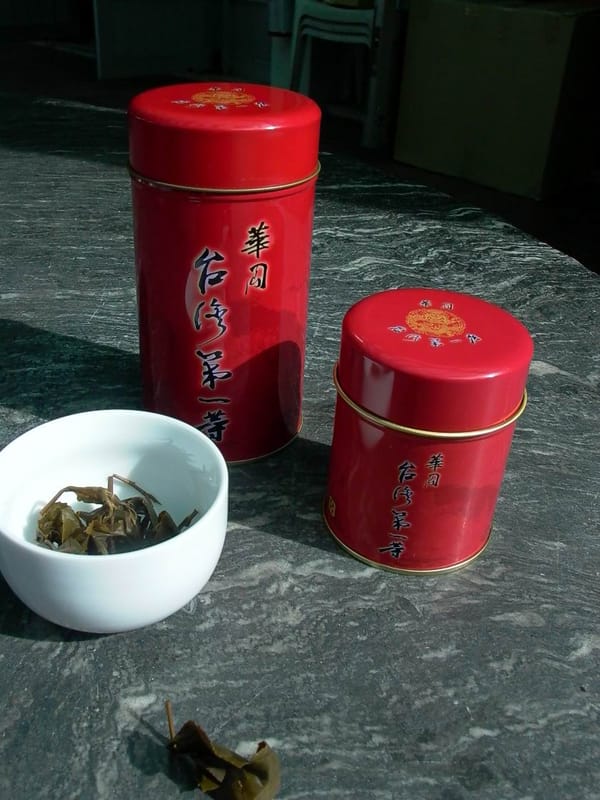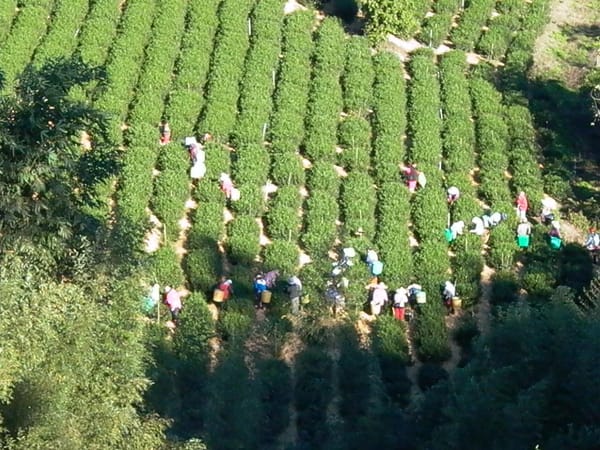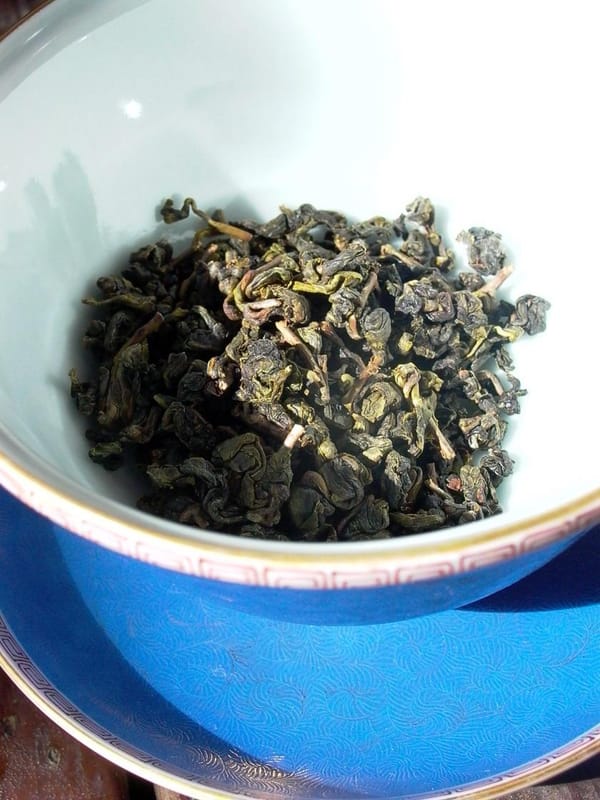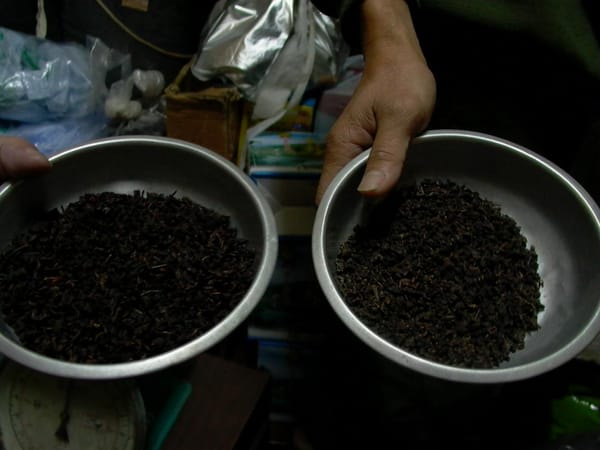In Taiwan’s tea industry, there is one region that quietly shoulders more than 40% of the island’s total tea production, yet it is not as famous as Alishan or Dongding. This is the Songboling Plateau in Mingjian Township, Nantou County—a tea land whose destiny was reshaped by a president’s words, and which has since become an industrial hub known as the “Tea Procurement Paradise of Taiwan.”
On January 19, 1975, Premier Chiang Ching-kuo visited Songboling. Deeply impressed by the fragrance and quality of the local tea, he named it on the spot “Songboling Changqing Tea” (Songbai Evergreen Tea). From then on, what had previously been known as “Puzhong Tea” or “Puzhong Qizhong” embarked on its path to becoming Taiwan’s largest tea base.
From a political leader’s praise to a tea kingdom producing 8,000 tons annually, how did Songbai Changqing Tea transform so magnificently within just a few decades? Let us dive into the story of this undervalued yet crucial tea region.
Geographic Advantages: A Tea Treasure by the Zhuoshui River
Mingjian Township is located on the north bank of the Zhuoshui River, at the southern end of the Bagua Mountain Plateau. While it seems ordinary at first glance, this land holds ideal conditions for tea development. The Zhuoshui River provides abundant water and fertile soil, while the mountain slopes ensure drainage and airflow, creating a unique environment for tea cultivation.
Unlike high-mountain tea regions that rely on altitudes of 1,000 meters or more, Songboling’s relatively lower elevation is an advantage. Its stable climate supports year-round tea growth, yielding high production while maintaining quality.
This balance of quantity and quality formed the foundation for Songbai Changqing Tea to become Taiwan’s largest tea production base.
Diversified Cultivar Strategy: Four Varieties in Perfect Harmony
The success of Songbai Changqing Tea is largely due to its diversified planting strategy. The region cultivates four main varieties: Qingxin Oolong, Jinxuan, Cuiyu, and Sijichun—each with its own flavor and market role.
- Qingxin Oolong: A traditional variety, late-budding, with small trees and oval leaves. It produces a mellow taste with elegant jasmine and osmanthus aromas, representing the essence of Songbai Changqing Tea.
- Jinxuan (TTES No. 12): Famous for its milky fragrance, with floral and buttery notes, and sugarcane-like sweetness at low temperatures. Extremely popular in the market.
- Cuiyu (TTES No. 13): Upright in shape, full-bodied in taste, with floral notes reminiscent of wild ginger lily, offering a unique choice in the region.
- Sijichun: A farmer-selected variety with strong floral notes (jasmine and fresh blossoms), robust flavor, and slight astringency—ideal for those who love bold aromas.
From Puzhong Qizhong to Songbai Changqing: Political Branding Power
The naming of Songbai Changqing Tea illustrates the role of politics in agricultural branding. Before 1975, local teas were sold as “Puzhong Tea,” “Puzhong Qizhong,” or “Songbai Pit Oolong.” Despite good quality, they lacked strong brand recognition.
Chiang Ching-kuo’s visit and naming gave the tea both political endorsement and a powerful marketing identity. The name “Changqing” (Evergreen) symbolized both the resilience of pine and cypress and the sustainable growth of the tea industry.
This gave local farmers a united brand and introduced consumers to a “presidentially recognized” tea region, cementing Songbai Changqing’s position in Taiwan’s tea map.
Industrial Scale: A Tea Kingdom Producing 40% of Taiwan’s Output
The true legend of Songbai Changqing lies in its industrial scale. With 2,500 hectares under cultivation and an annual production of 8,000 tons, it contributes more than 40% of Taiwan’s total tea yield—making Mingjian’s Songboling Plateau undeniably Taiwan’s largest tea base.
Few regions in Taiwan—be it Wenshan Baozhong, Dongding Oolong, or Alishan High Mountain Tea—can match such dominance. Even more remarkable, this scale is achieved without sacrificing quality, ensuring strong competitiveness in export markets.
Market Role: A B2B Success Story
The title “Tea Procurement Paradise” defines Songbai Changqing’s market role. Unlike high-mountain teas targeting consumers directly, this region mainly supplies B2B buyers.
Its teas are sold in bulk to merchants for repackaging and serve as raw materials for the tea beverage industry. Without this reliable supply base, Taiwan’s diverse tea market and booming tea drinks could not thrive.
This B2B model provides farmers with stable sales channels while forming the backbone of Taiwan’s tea economy.
Pricing Strategy: Pragmatic and Accessible
Songbai Changqing Tea is priced around NT$1,000 per jin (600g). Unlike luxury high-mountain teas costing several thousand, this mid-range pricing ensures both profitability and accessibility.
This approach allows it to serve broad consumer groups—those seeking quality without luxury prices, and tea merchants needing affordable raw material. Its identity as “affordable yet high-quality” has carved out a unique niche in Taiwan’s competitive tea market.
Conclusion: The Wisdom of a Quiet Giant
The story of Songbai Changqing Tea proves that success in Taiwan’s tea industry is not exclusive to high-mountain teas. Pragmatic strategies, sound market positioning, and investment in infrastructure can also build enduring achievements.
From a president’s casual naming to producing 40% of Taiwan’s tea, Songbai Changqing exemplifies another path to success: not the highest altitudes or steepest prices, but steady quality, fair pricing, and abundant output. It remains an indispensable pillar of Taiwan’s tea industry.
When we celebrate the aroma of Alishan or the sweetness of Dongding, we should also remember this quiet giant whose wisdom continues to shape Taiwan’s tea economy.





